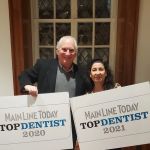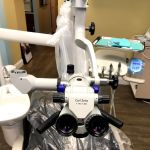How to Brush Teeth Correctly: A Step-by-Step Guide for Healthy Teeth
- The Importance of Brushing Teeth Correctly
- Steps to Brush Teeth Properly
- Common Mistakes in Brushing Teeth
- Tools for Effective Teeth Brushing
- Start Brushing Your Teeth Correctly Today!
1. The Importance of Brushing Teeth Correctly
Brushing your teeth is one of the most basic yet essential habits for maintaining good oral health. Brushing correctly helps remove plaque, a sticky film of bacteria, from your teeth and gums. If plaque is not removed, it can lead to tooth decay, gum disease, and bad breath. However, brushing your teeth incorrectly can cause gum damage, enamel wear, or missing areas, making it less effective. Learning how to brush teeth properly is crucial to avoid these issues and ensure long-term oral health.
2. Steps to Brush Teeth Properly
To brush your teeth correctly, follow these simple steps:
- Step 1: Choose the Right Toothbrush and Toothpaste: Select a soft-bristled toothbrush to avoid damaging your gums and enamel. Use fluoride toothpaste, which helps prevent cavities and strengthen teeth.
- Step 2: Position Your Toothbrush Correctly: Hold your toothbrush at a 45-degree angle to your gums. Gently move the brush back and forth in short (tooth-wide) strokes.
- Step 3: Brush All Surfaces: Brush the outer, inner, and chewing surfaces of all your teeth. Don’t forget to brush your tongue, which can harbor bacteria and contribute to bad breath.
- Step 4: Time Your Brushing: Brush for at least two minutes, ensuring you spend about 30 seconds on each quadrant of your mouth.
- Step 5: Don’t Brush Too Hard: Brushing too hard can cause enamel erosion and gum recession. Gentle, circular motions work best.
By following these steps, you can ensure that your teeth are cleaned effectively and your oral health is maintained.
3. Common Mistakes in Brushing Teeth
Even if you brush your teeth regularly, it’s possible to make mistakes that reduce the effectiveness of your routine. Here are some common mistakes:
- Brushing too quickly: Rushing through brushing can lead to missing areas of your teeth and gums. Take your time to ensure all surfaces are cleaned.
- Not brushing for long enough: Two minutes is the recommended time for brushing. Most people brush for just 30 seconds to one minute, which is insufficient for complete cleaning.
- Brushing too hard: Applying too much pressure can cause damage to your gums and tooth enamel. It’s important to brush gently.
- Using a hard-bristled brush: A hard-bristled toothbrush can wear down tooth enamel and irritate your gums. Always choose a soft-bristled brush for optimal cleaning.
By avoiding these mistakes, you can ensure that you’re getting the maximum benefit from your brushing routine.
4. Tools for Effective Teeth Brushing
The right tools can make a significant difference in the effectiveness of your brushing routine. Here are some tools to consider:
- Electric Toothbrush: Electric toothbrushes are often more effective at removing plaque and debris compared to manual brushing, as they provide consistent brushing motions.
- Floss: Don’t forget to floss! Flossing removes food particles and plaque from between your teeth, where your toothbrush can’t reach.
- Mouthwash: Using a mouthwash can help kill bacteria, reduce plaque, and freshen your breath, providing an extra layer of protection for your teeth and gums.
Using the right toothbrush and incorporating floss and mouthwash into your routine can significantly improve your oral hygiene.
5. Start Brushing Your Teeth Correctly Today!
If you’re ready to take your oral hygiene to the next level, make sure you’re brushing your teeth correctly. At Dentistry Toothtruth, we offer expert advice and high-quality oral care products to help you maintain a healthy, beautiful smile. Visit Dentistry Toothtruth for more information and to discover products designed to improve your brushing routine.







 Evan Berson, DMD - Best of the Main Line Area5.0 (2 review)
Evan Berson, DMD - Best of the Main Line Area5.0 (2 review) Castle Dental & Orthodontics4.0 (249 review)
Castle Dental & Orthodontics4.0 (249 review) Puyallup Pediatric Dentistry5.0 (467 review)
Puyallup Pediatric Dentistry5.0 (467 review) South Shore Dental Care: Dory Stutman, DDS5.0 (7 review)
South Shore Dental Care: Dory Stutman, DDS5.0 (7 review) Henry J. Austin Health Center at Ewing Street3.0 (33 review)
Henry J. Austin Health Center at Ewing Street3.0 (33 review) Mountainside Dental Group - Rancho Santa Margarita4.0 (117 review)
Mountainside Dental Group - Rancho Santa Margarita4.0 (117 review) The Importance of Oral Health Education During Pregnancy for a Healthy Pregnancy
The Importance of Oral Health Education During Pregnancy for a Healthy Pregnancy Best Tips for Brushing Your Teeth Properly for Healthy Gums: Essential Techniques for Oral Health
Best Tips for Brushing Your Teeth Properly for Healthy Gums: Essential Techniques for Oral Health Why Skipping Dental Checkups Can Lead to Bigger Oral Health Problems
Why Skipping Dental Checkups Can Lead to Bigger Oral Health Problems Advantages of Porcelain Dental Restorations
Advantages of Porcelain Dental Restorations How Can Diabetes Cause Tooth and Gum Problems? Preventing and Managing Oral Health Issues
How Can Diabetes Cause Tooth and Gum Problems? Preventing and Managing Oral Health Issues Healthy Habits for Promoting Good Oral Health and Hygiene: Tips for a Healthy Smile
Healthy Habits for Promoting Good Oral Health and Hygiene: Tips for a Healthy Smile